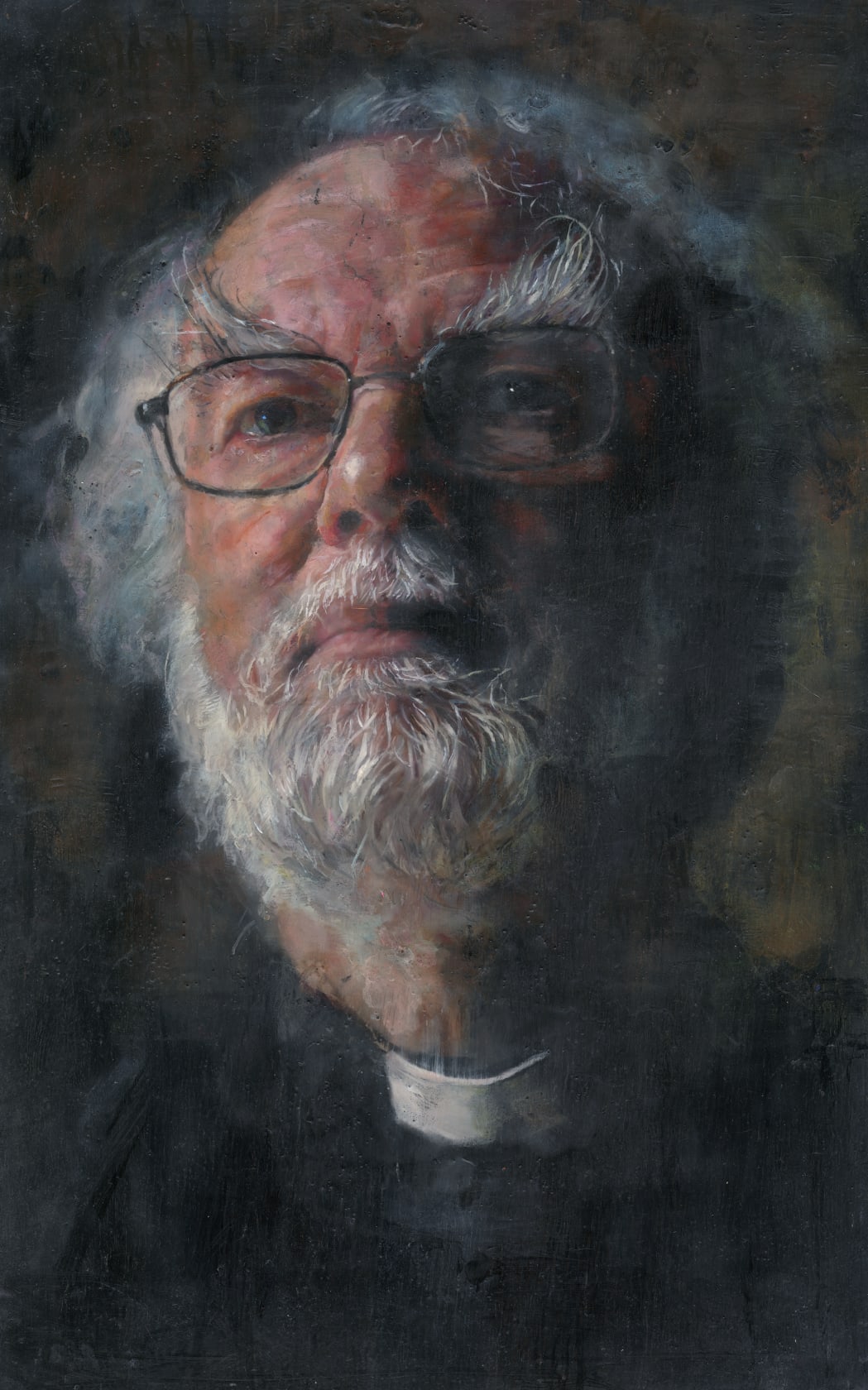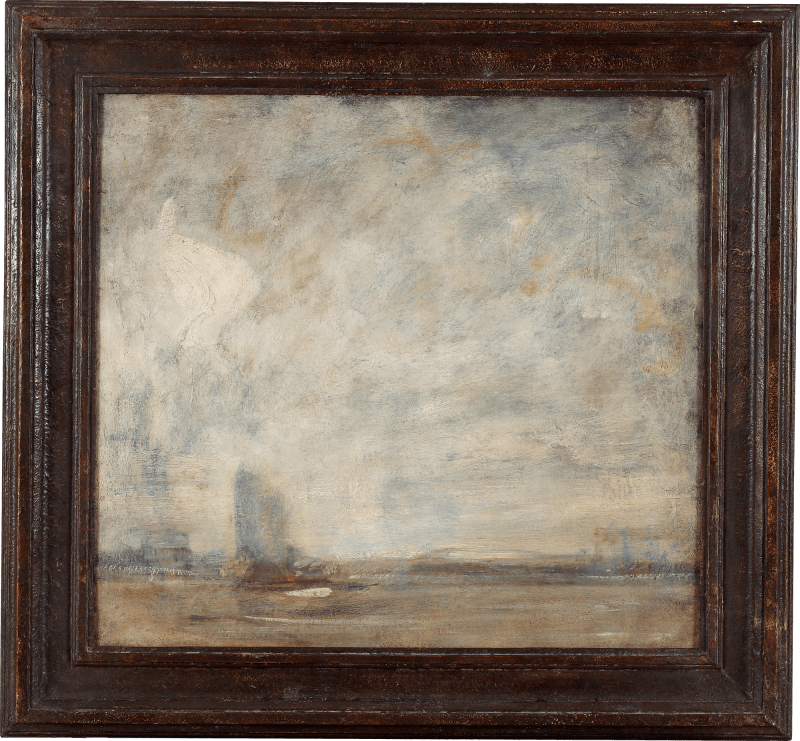To view all current artworks for sale visit philipmould.com
The present work offers a compelling introduction to former Archbishop of Canterbury Rowan Williams. Executed on an ancient piece of bog oak, The White Druid of the Gorsedd of Bards serves as a smaller companion piece to The Master of Magdalene (cat.56) [ex no.39] that brings into focus Williams’s contemplative visage and captures what Wadsworth describes as his “mystical, mythical, wise presence”.
Inspired by techniques derived from Late Antique Egyptian communities, Wadsworth has applied layers of clear wax with oil paint suspended in between, so that the image rests beneath the surface, seemingly within the prehistoric wood itself. The shadows combine with the blackened oak they are painted upon, and cloudy wax evokes the mists of the Welsh valleys; a celebration of Williams’s heritage.
Much of Williams’s theological and poetic work engage with an ancient Celtic past deeply intertwined with his own Welsh heritage. In 2002, in recognition of this work, Williams...
To view all current artworks for sale visit philipmould.com
The present work offers a compelling introduction to former Archbishop of Canterbury Rowan Williams. Executed on an ancient piece of bog oak, The White Druid of the Gorsedd of Bards serves as a smaller companion piece to The Master of Magdalene (cat.56) [ex no.39] that brings into focus Williams’s contemplative visage and captures what Wadsworth describes as his “mystical, mythical, wise presence”.
Inspired by techniques derived from Late Antique Egyptian communities, Wadsworth has applied layers of clear wax with oil paint suspended in between, so that the image rests beneath the surface, seemingly within the prehistoric wood itself. The shadows combine with the blackened oak they are painted upon, and cloudy wax evokes the mists of the Welsh valleys; a celebration of Williams’s heritage.
Much of Williams’s theological and poetic work engage with an ancient Celtic past deeply intertwined with his own Welsh heritage. In 2002, in recognition of this work, Williams was made a member of the highest of the three orders of the Gorsedd of Bards, a community of Wales’s key cultural contributors and poets. During the ceremony, the soon-to-be archbishop was given the Bardic name of Ap Neirin, which he chose after a sixth-century Welsh poet and in honour of his father, Aneurin. It’s also a nod to Aneurin Bevan, one of the architects of the National Health Service. Williams’s involvement in the Gorsedd of Bards sparked outrage amongst some wings of the Anglican Church, who accused the organisation of paganism.
Rowan’s gentle but firm gaze that reaches just beyond the perspective of the viewer is indicative of the quiet power of his wisdom. With untamed eyebrows and slightly billowing hair that folds back into the dark mists of the paintings background, Wadsworth has revealed not only a former bishop, but a man whose life has been shaped by the history, language and culture of an ancient mythical past.








